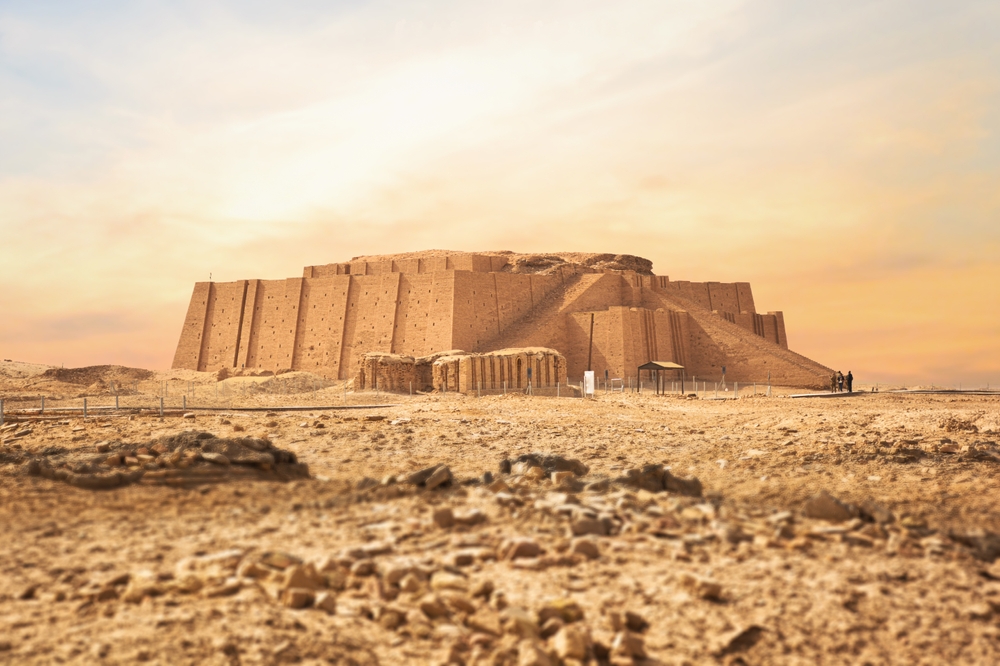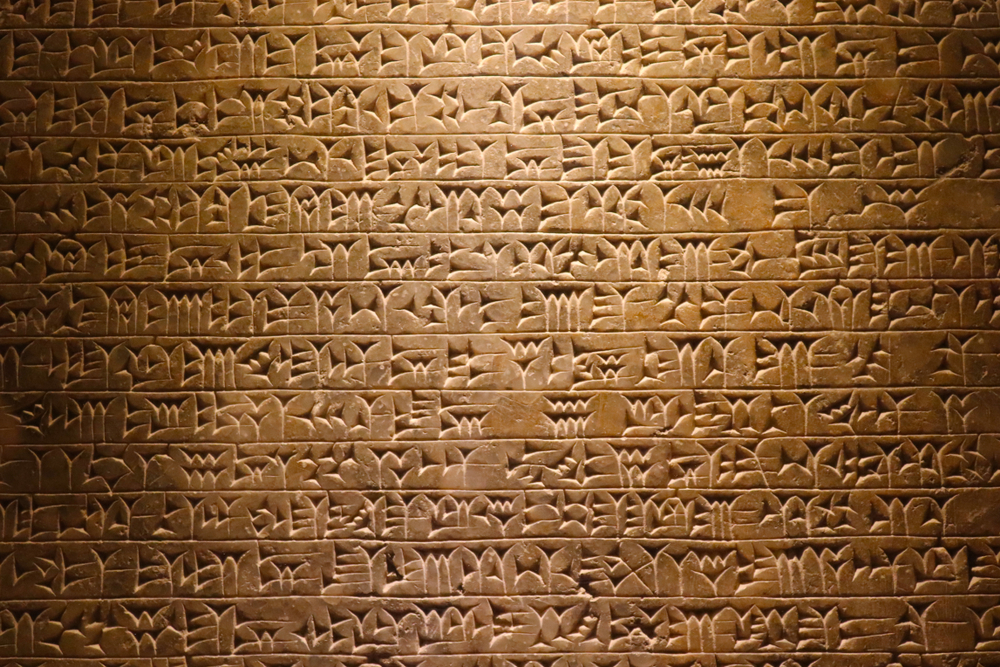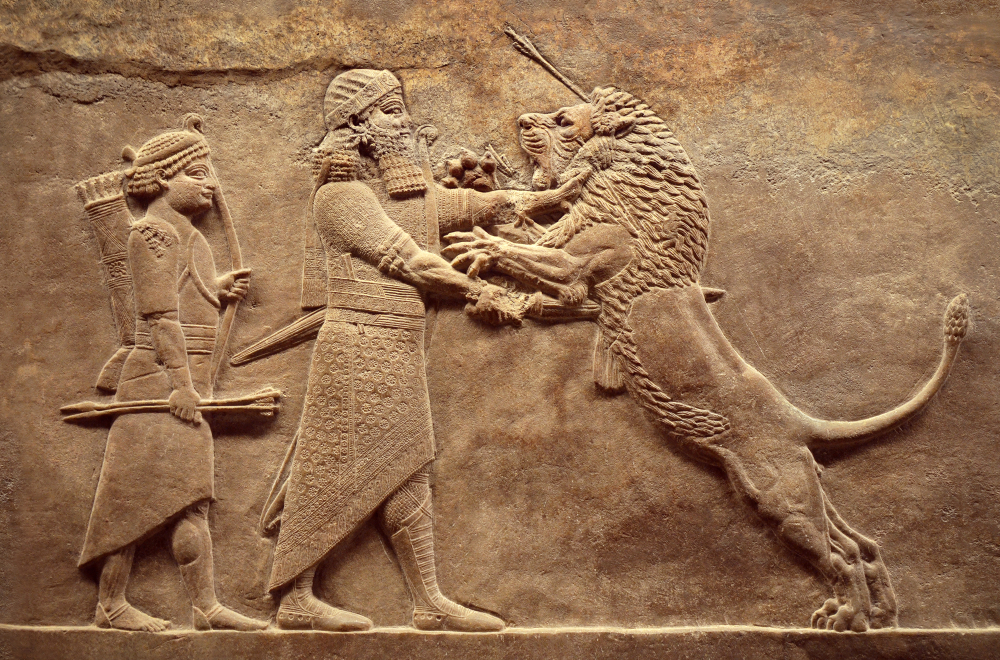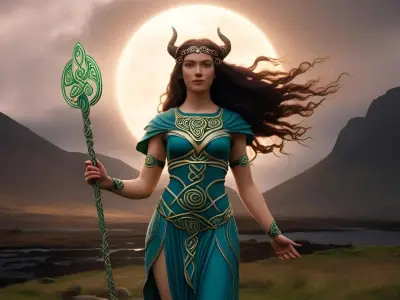Have you ever wondered about the origins of civilisation? Who were the first people to build cities, develop writing, and create complex societies? Today, let's explore the ancient world of the Sumerians, one of the earliest known civilisations in human history.
Jump to:
The Birth of the Sumerian Civilization

The Sumerians were truly remarkable people whose achievements laid the groundwork for many aspects of modern civilisation. They emerged in the southern part of Mesopotamia, in what is now modern-day Iraq, around 4500 BCE. This region, often called the "Cradle of Civilisation," was the setting for many firsts in human history. The Sumerians were pioneers in many ways, laying the foundations for future societies.
Early Sumerian Cities
The Sumerian civilisation was characterised by its city-states, each with its own ruler and deities. Some of the most notable cities included Ur, Uruk, and Eridu. These cities were centres of trade, culture, and governance, featuring impressive architectural feats such as ziggurats—massive temple complexes that served as religious and administrative hubs.
Sumerian Society and Culture
The Sumerians had a complex society divided into different classes, including priests, merchants, artisans, and farmers. They were skilled in various crafts, producing beautiful pottery, intricate jewellery, and remarkable sculptures. Sumerian art often depicted gods, goddesses, and scenes of daily life, providing valuable insights into their culture and beliefs.
Recommended for you!
Best SellersSumerian Religion and Mythology
Religion played a central role in Sumerian life. The Sumerians were polytheistic, worshipping a pantheon of gods and goddesses, each associated with natural forces and aspects of daily life.
Sumerian Gods and Goddesses
Some of the most prominent deities included Anu, the sky god; Enlil, the god of air and storms; and Inanna, the goddess of love and war. Each city-state had its own patron deity, who was believed to protect the city and its inhabitants.
Sumerian Mythology
Sumerian mythology is rich and varied, with stories that explain the origins of the world, the gods, and human beings. One of the most famous myths is the Epic of Gilgamesh, which tells the tale of a hero's quest for immortality. This epic is one of the oldest known pieces of literature and has had a lasting influence on storytelling traditions around the world.
The Sumerian Writing System

The Sumerians are credited with developing one of the earliest known writing systems, known as cuneiform. This writing system was a significant milestone in human history, allowing for the recording of laws, economic transactions, and literary works.
Cuneiform Script
Cuneiform script was composed of wedge-shaped marks made on clay tablets using a reed stylus. Initially used for accounting purposes, it eventually evolved to include a wide range of subjects, from legal codes to epic poetry.
Sumerian Language and Translations
The Sumerian language is a language isolate, meaning it has no known relatives. Despite this, scholars have made significant progress in translating cuneiform texts, providing valuable insights into Sumerian society, law, and literature.
Sumerian Achievements and Contributions

The Sumerians made numerous contributions to human civilisation, many of which still impact our lives today.
Inventions and Innovations
One of the most notable Sumerian inventions is the wheel, which revolutionised transport and trade. They also developed the plough, which significantly improved agricultural productivity. Other innovations included advances in mathematics, astronomy, and medicine.
Sumerian Art and Architecture
Sumerian art and architecture were highly sophisticated. Their sculptures, often made from limestone, alabaster, and bronze, depicted gods, rulers, and mythical creatures. Sumerian architecture featured impressive structures like the ziggurat of Ur, which stood as a testament to their engineering skills.
The Daily Life of a Sumerian
The daily life of a Sumerian was a blend of routine, ritual, and communal activity, deeply intertwined with their social structure and environment.
Family and Home Life
Sumerian families typically lived in mudbrick houses, which were designed to stay cool in the hot Mesopotamian climate. Homes were often centred around a courtyard, providing a communal space for families to gather and work. The typical household included extended family members, reflecting the importance of kinship and social bonds.
Work and Occupations
The Sumerians had a diverse economy with a variety of occupations. Farmers formed the backbone of society, cultivating crops like barley, wheat, and dates along the fertile banks of the Tigris and Euphrates rivers. Irrigation systems were essential for agriculture, allowing the Sumerians to sustain their cities.
Artisans and craftsmen were highly valued for their skills in creating pottery, weaving textiles, and working with metals. Traders and merchants facilitated the exchange of goods, both locally and with distant lands, contributing to the prosperity of the city-states.
Education and Writing
Education was important, particularly for the elite. Young boys from wealthy families attended schools called "edubbas," where they learned to read and write cuneiform script. Scribes were highly respected, as their ability to document transactions, laws, and stories was crucial to the functioning of Sumerian society.
Religious Practices
Religion permeated every aspect of Sumerian life. Daily activities often included rituals and offerings to the gods, seeking their favour and protection. Temples, or ziggurats, were not only religious centres but also served as administrative hubs where priests and officials conducted civic duties.
Clothing and Personal Adornment
Sumerian clothing was practical yet often ornate. Men and women wore skirts called "kaunakes," made from sheepskin or wool, with the fleece left on to create a distinctive tufted appearance. Wealthier individuals adorned themselves with jewellery made from gold, silver, and semi-precious stones, reflecting their status.
Food and Dining
The Sumerian diet was varied and nutritious. Staples included barley, which was used to make bread and beer, a popular beverage. Dates, vegetables, and legumes were common, while meat from livestock such as sheep, goats, and cattle was enjoyed on special occasions. Meals were often communal, reinforcing social ties and community spirit.
Recreation and Entertainment
Sumerians enjoyed various forms of entertainment, including music, dance, and games. They played board games similar to modern-day backgammon, and music was an integral part of their culture, with instruments like lyres and flutes being popular.
Law and Order
The Sumerians were pioneers in the development of legal systems. The Code of Ur-Nammu, one of the oldest known law codes, outlined rules and punishments to maintain social order. These laws covered various aspects of daily life, from trade regulations to family matters, reflecting the complexity of their society.
Community and Festivals
Festivals were an essential part of Sumerian culture, providing opportunities for socialising, religious observance, and communal celebration. These events often featured processions, feasts, and sacrifices, reinforcing the community's shared beliefs and values.
Frequently Asked Questions About the Sumerians
Are Sumerians and Mesopotamians the same people?
While the Sumerians were one of the first groups to inhabit Mesopotamia, the term "Mesopotamians" refers to all the peoples who lived in the region over millennia, including the Akkadians, Babylonians, and Assyrians.
What ethnicity were the Sumerians?
The ethnicity of the Sumerians remains a topic of debate among scholars. However, they are generally considered a distinct group within the broader Mesopotamian region.
Who is descended from the Sumerians?
It is challenging to trace direct descendants of the Sumerians due to the complex history of migrations and cultural intermingling in Mesopotamia. However, many modern populations in the Middle East may carry some genetic heritage from these ancient people.
Were ancient Sumerians black?
The skin colour of the Sumerians is not definitively known, as ancient texts and art rarely focused on this aspect. They were likely a diverse people, as Mesopotamia was a crossroads of different cultures.
Was Abraham a Sumerian?
According to some interpretations of the Bible, Abraham, a key figure in Judaism, Christianity, and Islam, was born in Ur, a major Sumerian city. This connection highlights the influence of Sumerian culture on later civilisations.
Are Sumerians the first humans?
The Sumerians were not the first humans, but they were among the first to develop a high level of civilisation, including cities, writing, and complex institutions.
What came first, Sumerian or Egyptian civilisation?
The Sumerian civilisation emerged slightly earlier than the Egyptian civilisation. Both civilisations developed around the same time and significantly influenced human history.
Who were the Sumerians in the Bible?
The Bible references Sumerian cities like Ur and Babylon, indicating the influence of Sumerian culture on the biblical narrative. These references provide historical context to the stories and figures mentioned in the Bible.
Are Sumerians still around today?
The Sumerian civilisation itself has long since vanished, but their legacy lives on in the cultures and people of the Middle East. Their innovations and ideas continue to shape modern society.
What does the Bible say about Sumerians?
The Bible does not explicitly mention the Sumerians by name but references places and events associated with them, highlighting their impact on the ancient world.
Who has Sumerian DNA?
Determining who has Sumerian DNA is complex due to the passage of time and the mixing of populations. However, genetic studies of ancient remains can sometimes provide clues about the ancestry of modern populations in the Middle East.
Recommended for you!
Best SellersStudy the Sumerian and Mesopotamian Civilisation for £29
If you're intrigued by the story of the Sumerians and want to learn more about their world, consider enrolling in the Sumerian and Mesopotamian Civilisation Diploma Course offered by the Centre of Excellence. For a limited time, you can get this course for just £29.













